Recommended Varieties/Cultivars
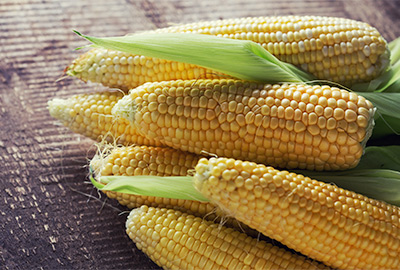
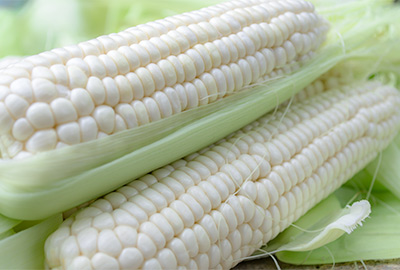
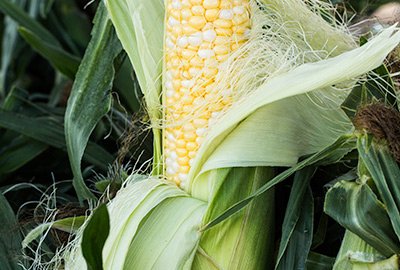
With its thin-skinned and creamy kernels, sweet corn varieties are ideal for fresh eating. For a reliable, heirloom, open-pollinated variety of sweet corn, try Golden Bantam, a standard in home gardens for over a century. It's not as sweet as hybrid varieties, but its rich corn flavor is hard to beat. Country Gentleman, another old heirloom, is unusual in that white kernels grow in an irregular patchwork, a surprise to both the eyes and mouth for gardeners and eaters used to their corn kernels being in rows.
Hybrid varieties of sweet corn are bred for extra sweetness. Some varieties, such as Delectable (yellow) and Argent (white) maintain sweetness longer after being picked than open-pollinated corn varieties. Other hybrids to consider include the early Buttergold, and the white hybrid Frosty. Early Sunglow Hybrid tolerates cooler soils and weather than other corn varieties. For novelty hybrids, try Painted Hill, which produces attractive white-and-multi-colored ears with outstanding flavor, or Ruby Queen, an unusual sweet corn with red kernels.
Sweet corn ears that are pollinated by flour corn, field or dent corn, popcorn, or supersweet corn will become tough and starchy, which ruins their flavor and texture. Kandy Korn is a sweet-corn variety that resists turning starchy when pollinated by other corn types, and is a good choice for planting in community gardens or anytime a gardener can't control what other corn types are being planted within several hundred feet.
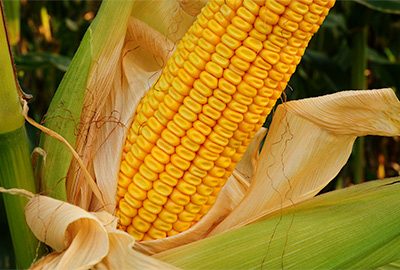
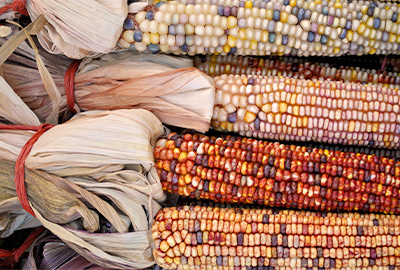
Ornamental corn varieties are grown by home gardeners for their sheer beauty, novelty, and for autumn decoration and crafts. Most are unpalatable for fresh eating, although dedicated or curious kitchen gardeners may grow them to produce cornmeal. Most ornamental varieties of corn are field/dent or flint/Indian types, and they come in a wide range of colors and color combinations. Popcorn types may also be grown as ornamentals. Bloody Butcher is an old and classic heirloom dent type that produces plants up to 12 feet in height and richly red ears that can be eaten fresh like sweet corn when young. Earth Tones is a beautiful dent corn that produces kernels in striking combinations of blue, pink, green, orange, red, brown and other colors. Painted Mountain is a unique cold-tolerant modern field corn that can be eaten fresh as sweet corn when ears are young.
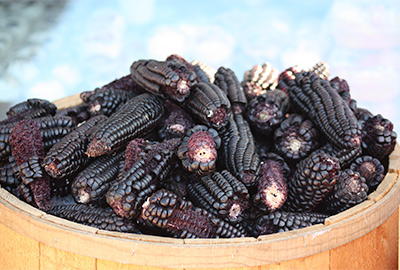
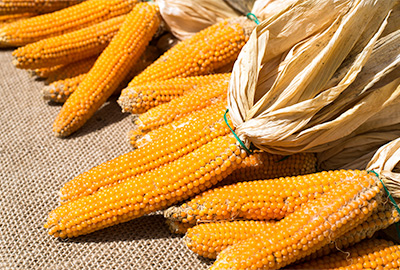
Hopi Blue Corn, a flint variety, is adapted to hot and dry environments. It may be eaten as sweet corn when ears are young, grown as ornamental corn, or harvested at maturity to grind into blue flour.
For homegrown popcorn, GardenZeus recommends the heirloom Dakota Black, which produces purple-black or red-black ears. Strawberry is a great variety for growing with children because it produces small stalks up to about 4 feet in height, and strikingly red small ears. Both of these varieties may also be grown as ornamentals. For a reliable and productive hybrid popcorn, try Robust Pop.
Buying/Selection Tips
Purchase seeds, not seedlings. Sow corn directly outdoors when soil temperatures are 50°F or warmer for treated seeds, and preferably 65°F or warmer for untreated seeds. GardenZeus recommends against purchasing corn starts; they are more prone than seeded plants to shock, poor or no yield, diseases, pests, and other problems.
Corn can be effectively transplanted within within 4 or 5 days (not weeks) after germination; this is recommend for skilled biointensive gardeners and experienced gardeners who are willing to monitor seedlings closely.
GardenZeus recommends untreated corn seeds. If you are having trouble with corn germination, wait until soils are warmer.
Are you considering planting a supersweet corn variety? See: GardenZeus Quick Tips: Should I grow Supersweet Corn in my Garden?.
Soil Needs/Tip
Corn is a very heavy feeder, perhaps the most demanding of the common garden vegetables. It needs rich, fertile, well-drained soil with sufficient phosphorous, potassium, and organic matter. Avoid growing corn in the same place for more than one season every 3 years to avoid depleting soil and concentrating pest populations and diseases.
In nearly all soils, corn needs supplemental nitrogen throughout the growing season. Corn is less extreme in its demand for secondary nutrients (calcium, magnesium, and sulfur) and micronutrients. It prefers slightly acidic soil, with an ideal pH of 6.0 to 6.5, but performs well at soil pH of 5.8 to 6.8.
Corn may grow slowly and produce few, small, or no ears in alkaline soils above 7.0 pH, in acidic soils below about 5.5 pH, in infertile or nitrogen-poor soils, in wet or poorly drained soils, or in compacted soils. If your plants are consistently weak, small, or unproductive, the most likely cause is unsuitable soil conditions. Reduce compaction, add organic matter, improve drainage or increase watering, increase nitrogen and fertility, consider a soil test, and try a different variety or a hybrid variety.
See GardenZeus Soil and Fertilization Tips for Growing Corn in California for more information.
Suitable Microclimate
Corn needs warm soil and warm days to germinate and grow rapidly. To mature ears optimally, it needs warm nights with days that aren't too hot. Avoid planting in low spots or garden areas where soil tends to remain wet or cold air collects.
Corn prefers full sun, but benefits from light afternoon shade when temperatures are above 95°F. If planting corn in hot-summer areas such that ears may be maturing during the heat of summer, a southeastern exposure or afternoon-shaded southern exposure may be preferable to a full southern or western exposure.
Corn should be seeded directly outdoors when soil temperatures are 50°F or warmer for treated seeds, and preferably at 65°F or warmer for untreated seeds. GardenZeus recommends untreated seeds. See Buying/Selection Tips, above, for information about alternatives to using treated seeds.
See GardenZeus Secrets of Success for Growing Corn in the California Home Garden for detailed information about suitable temperatures for growing corn.
Getting Started
Corn is demanding, with a long list of needs for successful harvest of kernel-filled ears. It requires careful timing for planting that may vary year-to-year throughout California depending upon seasonal temperatures.
Despite its challenges, what a wonder homegrown corn can be when cooked fresh and enjoyed with friends or loved ones. With moderate experience, skill, and attention from the home gardener, corn can be an immensely rewarding garden plant. See GardenZeus Secrets of Success for Growing Corn in the California Home Garden for tips from expert Darren Butler.
How many corn plants should you plant? See: GardenZeus Quick Tips: How Many Corn Plants Should I Grow in My Garden?.
See "Planting Method/Tips" and "Spacing" in the GardenZeus section "Planting and Maintaining" for more information about effective planning, planting, and spacing of corn.
Watering Tips
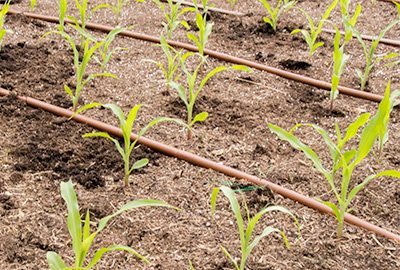
Corn requires consistent, sufficient moisture in well-drained soil, especially during seedling growth, during the critical pollination period after the emergence of the corn silks or tassels, and during development of kernels.
As corn seedlings leave the seedling stage and begin to establish, water less frequently and more deeply, to the full estimated depth of roots. When young, corn roots tend to be shallow, but roots may grow to more than 3 feet deep in loose, fertile soils as plants mature. Root depth and water penetration in soil can be evaluated by pressing a long screwdriver or thin metal probe into soil and noticing when soil resistance changes as dry soil is reached. This method is preferred with corn to using a shovel, which may sever root sections. A shovel can also be pressed carefully into the soil outside of a garden bed or beyond the root systems of any established corn plants.
Corn leaves often curl to reduce transpiration on hot days. This is not necessarily a sign of serious drought stress. If plant leaves remain curled overnight or when temperatures are cool, increase the frequency or depth of your irrigation.
Popcorn and ornamental corn types should be dry on the stalk at harvest; reduce watering for these varieties as ears mature to allowing drying.
Planting Method/Tips
GardenZeus recommends that you obtain quality corn seeds (See "Recommended Varieties/Cultivars" in the GardenZeus section "Getting Started" for reliable and interesting varieties).
Planting seeds into already-fertile soil is critical for seedling growth and later yield. See "Soil Needs/Tips" in the GardenZeus section "Getting Started" for more information.
Seed corn directly; it is sensitive to root disturbance and generally should not be transplanted. Corn can be effectively transplanted within a few days (not weeks) after germination; this is recommended for skilled biointensive gardeners and experienced gardeners who are willing to monitor seedlings closely, time plantings within a narrow window, and handle transplants with extreme care.
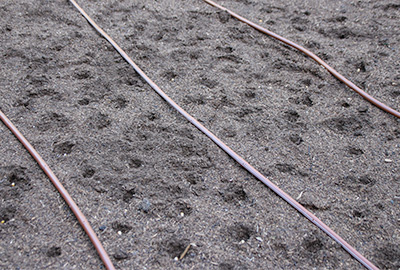
Corn should be planted in blocks rather than rows for effective pollination in the home garden. GardenZeus expert Darren Butler recommends a minimum bed or block size of 8 feet by 4 feet (32 square feet), with corn beds never narrower than 4 feet. Larger sections generally produce better pollination. See the GardenZeus section "Pollination Needs/Tips," below, for more information.
Be sure to purchase enough corn seeds to plant in blocks. You will need about 20 to 30 grams (about 3/4 to 1 ounce) of corn seeds to plant 30 to 40 square feet of corn spaced at 4 to 6 inches for later thinning. Some corn seed packets may include only 10 or 12 grams (about 1/3 to 2/5 ounce) of seeds; be sure to purchase enough seeds for planting corn in blocks.
Corn can grow surprisingly tall. Plant your corn in a location that will still be suitable when the corn is 6 feet tall, or for some varieties up to 12 feet or more tall. Generally in California this means planting on the north side of your garden to avoid corn shading other plants as it matures.
For more tips and information about planting corn, including seed quantities you will need to plant corn in blocks rather than rows, see GardenZeus Secrets of Success for Growing Corn in the California Home Garden.
Spacing
Sow corn seeds 1 inch deep and 4-6 inches apart. Thin to 12 to 15 inches apart when plants are about 4 inches tall. Short and miniature varieties may be planted as close as 7 or 8 inches apart, while tall varieties may need spacing of 18 to 24 inches or more.
For large plantings of 1/4 acre or more, rows of corn should be planted about 32 to 36 inches apart.
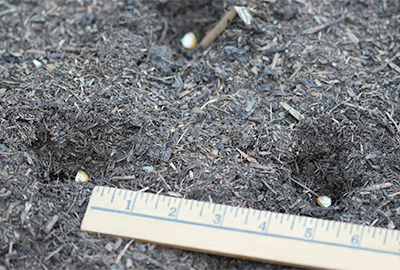
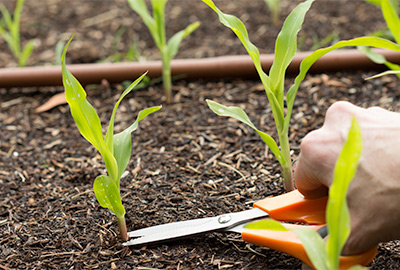
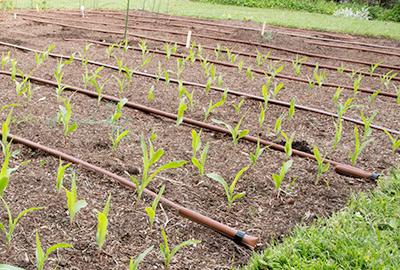
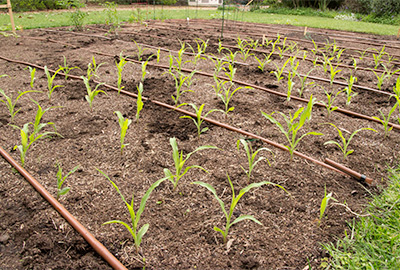
Timelines
5 to 14 days or longer to seed germination. Corn germinates quickly at soil temperatures above 65°F, and slowly at temperatures below 60°F.
Transplanting is possible in a window of about 3 to 6 days after germination but is recommended for bioiontensive and skilled gardeners only.
Corn growth rate varies depending upon temperature. Thin to final spacing when plants are 3 to 4 inches tall, approximately 10 to 20 days after germination.
About 65 to 120 days from planting to harvest, depending on variety and environmental factors.
Harvest Period: Sweet-corn plants generally produce 1 to 2 ears, often one ear for early varieties and two ears for late varieties, with variable time to maturation.
Pollination Needs/Tips
Corn is monoecious, with male and female flowers on the same plant. The male flower is called the tassel and forms on top of each corn stalk; while the female flowers are the numerous silks that form on each ear. Each silk must receive pollen from a male flower, generally from a different corn plant, to form a single kernel on the corn ear.
Corn needs thorough pollination to produce ears full of kernels, and is primarily pollinated by wind. Gently shaking corn stalks may improve pollination. See the GardenZeus section "Planting Method/Tips," above, for planting recommendations to improve pollination.
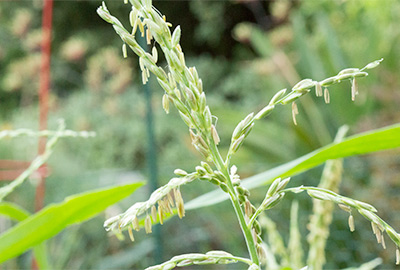
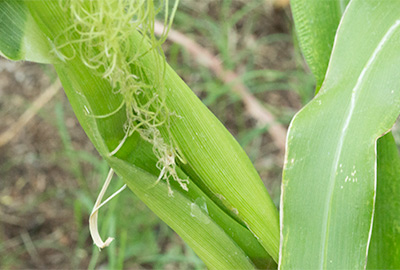
Kandy Korn is a sweet corn variety that resists turning starchy when pollinated by other corn types; see "Recommend Varieties/Cultivars" in the GardenZeus section "Getting Started;" and "Planting Method/Tips," above, for more information.
Pollination may be problematic if corn plants are spaced widely in the home garden, such as in rows, if plants water-stressed, during hot periods above 95°F, or under windy conditions.
Interplanting/Companion Planting
Corn produces best in home gardens when planted in solid blocks. You may maximize corn yield by avoiding companion planting entirely. GardenZeus expert Darren Butler recommends a low-growing nitrogen-fixing cover crop such as clover, that can be cut at ground level and/or mulched over to retain nitrogen-rich nodes underground on roots without tilling that will disturb sensitive corn roots, as a springtime companion for corn in your zone. If you have plenty of space in your garden for a large patch of corn with extra space between plants, consider squash, cucumbers, melons, parsley, or dill.
The Three Sisters is a traditional Native American agricultural grouping that includes corn, beans, and squash. Will this combination work in your garden? See GardenZeus Quick Tips: 'The Three Sisters' Companion Planting Combination for California.
Nutrient/Amendment/Fertilization Needs/Tips
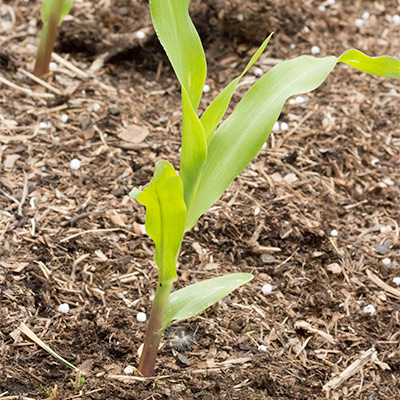
Corn is a heavy feeder. It should be planted into rich, fertile soil, and is best planted after growing a nitrogen-fixing cover crop. In virtually all soils, corn requires supplemental nitrogen, primarily during the growth period from germination until silks first appear. Garden Zeus recommends adding nitrogen in the form of diluted urea or a cup of chicken manure diluted in 4 gallons of water (half cup if fresh manure) and mixed thoroughly, applied as a soil drench, about every 2 to 3 weeks throughout the growing season.
See GardenZeus Soil and Fertilization Tips for Growing Corn in California for more information.
Mulching
Use 1/4 to 1/2 inch of fine mulch for small starts under 4 inches in height; increase to 1/2 inch or more of fine-to-medium mulch after plants are 6 to 12 inches tall.
Pruning/Cutting Back/Pinching/Separating
GardenZeus does not recommend cutting back or pinching corn plants at any stage of growth. Male flowers form at the top of corn plants; cutting them off will inhibit pollination and therefore may reduce yield in a corn bed or patch as a whole.
Corn plants may produce secondary stems, sometimes called suckers but more accurately called tillers. These tend to form under ideal environmental conditions for growing corn, when plants are vigorous and healthy, on plants at bed edges or when corn plants are spaced unusually widely apart, or when the main stalk of a corn plant is damaged. Tillers may increase yield slightly for some corn varieties when grown commercially or in large plantings, but generally are not significant in home gardens. They do not compete with the main corn stalk, and will not not produce corn ears unless the main stalk is damaged.
Propagating
From seed. GardenZeus recommends open-pollinated, untreated, organically grown corn seeds.
Growing and saving high-quality corn seeds requires skill and effort; most home gardeners do not save corn seeds. The majority of readily available sweet-corn seeds are hybrid varieties and will not grow true to type. Corn easily cross-pollinates, and can cross with other corn varieties at distances of two miles or more. Special bagging and hand pollinating techniques are used to prevent cross-pollination, and seed should be saved from a larger number of plants than is necessary with most other vegetables to maintain varietal genetics and quality over multiple corn generations.
Container Gardening
Standard-size corn is generally not recommended for container gardening due to naturally large, spreading root systems; the need for highly fertile soil that can be difficulty to maintain in containers; and the number of plants required for proper pollination.
Miniature corn varieties have been bred for container gardening, such as the hybrid supersweet variety On Deck. Corn is a heavy feeder. Be sure to provide sufficient supplemental fertility, especially nitrogen, when growing corn in containers. See "Nutrient/Amendment/Fertilization Needs/Tips," above, for more information.
Seasonal Care
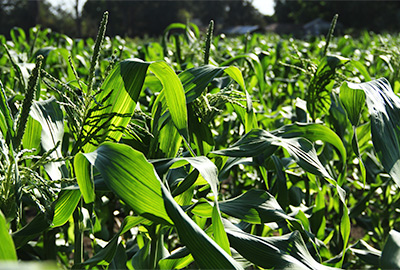
Seed corn after nighttime temperatures are consistently above 50°F and daytime temperatures are consistently in the 70s to high 80s.
Corn tolerates short periods of frost, but cold soils tend to produce poor germination and seed rot. Once germinated, corn seedlings may survive a mild late-winter and early-spring weather in many California areas to produce an early crop. If planting into cold soil below 55°F, GardenZeus recommends Early Sunglow Hybrid sweet corn or Painted Mountain field corn. See "Recommended Varieties/Cultivars" in the GardenZeus section "Getting Started" for more information.
Corn growth rate and maturation of ears is highly dependent on temperature. Generally, warmer temperatures means faster growth and maturation, but corn suffers at temperatures above 95°F.
If planting in hot-summer areas at a time such that corn ears will be maturing after the heat of summer arrives, a southeastern exposure or or afternoon-shaded southern exposure may be preferable to a full southern or western exposure.
Wind may tend to blow down corn plants, especially once they are full-sized. The plants may spring back up on their own, but you can assist them by setting them upright and packing soil around the base of plants.
Corn tends to be shallow rooted; avoid weeding or otherwise disturbing soil near corn if possible, particularly after silks form.
See "Nutrient/Amendment/Fertilization Needs/Tips" in the GardenZeus section "Planting and Maintaining" for recommendations about fertilizing corn.
How to Harvest
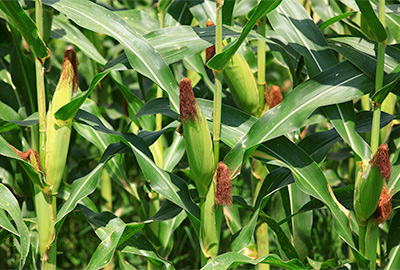
Sweet corn is normally ready to harvest about 17-24 days after silks form. Timely harvest of sweet corn is important. Monitor ears closely after silks have been present for about 10 days to avoid allowing ears to become over-mature. Sugar in corn kernels readily turns to starch if ears remain unharvested too long. For some varieties sweet corn can go from immature to over-mature in 1 to 2 days during warm-to-hot weather.
A ripe ear of sweet corn should feel plump and full. Silks should be browning but not dry. To test readiness for harvest, carefully open the husk near the end of an ear. Prick open a plump corn kernel with your thumbnail and look at the liquid from inside. If clear and watery, the ear is unripe; if opaque and milky, the ear is ready for harvest. When overripe, corn kernels become tough and lose sweetness.
After an ear of corn is opened to check for maturity, it may attract birds or insects. Protect the opened ear by tying a paper bag over it to discourage pests.
Corn ears are harvested by bending ears downward and quickly twisting.
All types of corn other than sweet corn, including popcorn, flour, flint, and dent corns, are generally harvested after ears have dried on the plants. Kernels should be smooth, hard, and glossy. After harvesting, ears should be set out to dry for a few more weeks in a covered area with good air circulation. Rubbing two ears together allows dry kernels to be removed from cobs more efficiently than scraping one ear at a time.
Harvesting Tips
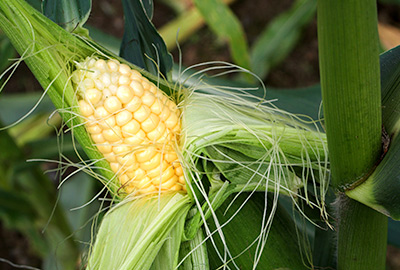
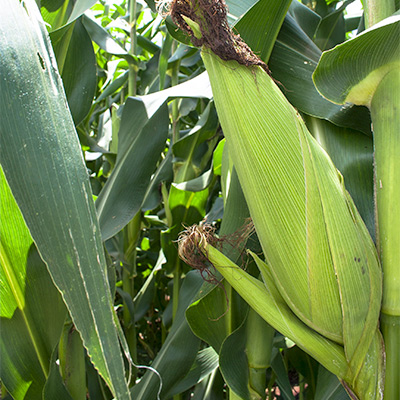
GardenZeus expert Darren Butler is fond of the old garden saying, "Harvest corn after the cookpot is boiling." Because sugars in corn kernels turn so rapidly to starch in most varieties, the sweetest and most-flavorful corn can be enjoyed only by harvesting and cooking immediately.
Be especially careful to water plants sufficiently after silks appear and during periods of hot temperatures over 95°F. Corn plants may be most sensitive to heat stress and sunburn during the last few weeks before harvest. A short period of water stress during hot weather may significantly reduce pollination and yield.
Sweet-corn plants generally produce 1 to 2 ears, often one ear for early varieties and two ears for late varieties. The second ear is usually smaller, and often ready for harvest a few days after the first.
Popcorn and ornamental corn types should be dry on the stalk at harvest; reduce watering for these varieties as ears mature to allowing drying.
What Commonly Goes Wrong
Poorly filled ears: Inadequate pollination, or extreme heat or wind. If there are only a few stalks of corn planted, kernels will not receive enough pollination. If soil dries too much, corn kernels may be shriveled or underdeveloped. Lack of nutrients may also result in incomplete ears. If the corn silks are shortened, ear wigs may have chewed them off, resulting in poor pollination.
Root rot: Overly wet, moist soils.
Slow growth, yellowing, lack of vigor, sickliness in plants: These common symptoms may result from overwatering, underwatering, cold weather, compacted soil, alkaline soil, lack of nitrogen, or lack of a key soil nutrient. May also be the result of too much sun, wind, or other environmental and abiotic factors.
Lodging: Excessive nitrogen, or high winds.
Not a Problem
Different maturation time: Corn maturation can be largely variable from what your seed package says, and is highly dependent on temperature and environmental conditions. As long as your plants seem to growing vigorously and appear healthy, significantly varying maturation times from predicted dates are not necessarily a problem.
Common Diseases
Smut: A fungal disease which appears as large whitish growths on various parts of the corn. It is usually more common toward the end of the season, particularly in warmer areas. These growths carry infinite numbers of spores, which will quickly spread throughout your garden if you allow the growths to burst. While smut is considered a big problem in North American commercial crops, smut is regularly eaten in Mexico, and considered a delicacy, and is highly nutritious (See GardenZeus section "Special Info" for more information about corn smut".)
Damping Off: Common soilborne fungi and other pathogens that may suddenly kill smaller seedlings and starts. Occurs most commonly in cool, damp soils.
Mosaic viruses: These types of viruses are carried by soft-bodied insects, such as aphids, and cause yellowing of plants, stunted growth, and poor ear development. Reduce populations of harmful aphids by encouraging beneficial (to your garden ecosystem, not to the aphids) predatory and parasitic insects to take up residence in your garden.
Corn plants are also affected by stalk and ear rots and rust. Provide ample water and fertility to help develop strong, resilient healthy plants from the start. Over-watered corn plants are highly subject to injury from fungal or bacterial infections. Avoiding over-head watering can also help minimize diseases in corn plants.
Common Pests
Corn earworms are one of the most common pest problems. Earworms are the larval stages of a moth, which lays eggs on the corn silks. The larvae feed on the developing kernels and can be extremely destructive.
Other pests include aphids, army worms, cutworms, flea beetles, grasshoppers, leafhoppers, leaf miners, nematodes, spider mites, thrips, earworms, birds, raccoons, rats, or other mammals.
Special Care
Baby corn, often eaten in various Asian dishes, is simply an immature type of corn. The development of this corn is believed to have been inspired by royal families of China; the first baby corn were just immature corn that developed as the second ear. However, after the royal families were served this corn and declared their fondness of it, varieties were selected by Chinese farmers to be specifically to be harvested at an early stage. Harvested young, baby corn types are eaten whole. They are usually harvested within a few a weeks of planting, as soon as the corn silks appear.
Special Info
Corn smut, also called huitlacoche, has been eaten in Mexico and Central America for thousands of years.
Smut contains extremely high levels of lysine, an essential amino acid. Even though smut has never become very popular in the United States, some researchers are studying methods of intentionally innoculating corn fields with smut fungus, to produce smut on a uniform scale, with potential commercial production in mind. Smut can be used in soup, with eggs, in tamales or quesadillas. Smut is even becoming more popular in Canada, where a single corn cob covered in smut may sell for up to eight dollars.
By using lights and movable packing stations, commercial sweet corn is often picked at night. This way the ears are cooler and have a longer shelf life.
Though drought management in commercial corn production is currently being analyzed, most commercially grown corn is grown using furrow irrigation.
Though the genetic diversity is greatest in flour, flint, and dent corn types, these varieties require significant amounts of processing to eat, and are usually not practical for a home gardener unless you have a corn flour mill or other specialized processing tools. Popcorn types are often grown by home gardeners, though more as a novelty.
Sustainable Landscaping Tip
Try interplanting corn with Rocky Mountain Bee Plant, (Cleome serrulata). This plant is edible, and will attract many beneficial insects to your garden. A traditional companion plant to corn, Cleome serrulata will help ensure adequate pollination for your squash plants.
Ornamental corn can be used to bring seasonal interest to your garden and make a beautiful temporary border; try planting Zea mays Japonica. This type of corn has gorgeous variegated leaves, and richly colored kernels.
Advanced Tip
It is possible to grow more than one variety of corn in your garden at once if you stagger the maturation times far enough apart. Chose an early maturing type and a late maturing type and have the corn tassels emerge at least two weeks apart to prevent cross-pollination. Planning successions of corn is more difficult than with other crops, as corn maturation is more variable.
Preservation, Storage, and Use
All vegetables are best consumed immediately after harvesting, but perhaps none more so than corn. The open-pollinated and heirloom varieties of corn recommended by GardenZeus begin to lose their sweetness and begin to convert sugar to starch from the moment they are harvested. GardenZeus strongly recommends eating corn the day it is harvested. Boil your water or fire up your grill, then harvest and clean your corn.
Under ideal storage conditions of 32° F and 95% relative humidity corn will store for 5 to 8 days.
Trimming excess material off the stalk side can help reduce moisture loss in storage, as well as storing in the original husk. Corn is not significantly affected by ethylene producing fruits and vegetables.
Sweet corn can be frozen for future use. Blanching corn for a few minutes before freezing can help maintain flavor. Extra sweet corn types should be blanched for 4 minutes, standard varieties at 6 minutes. Remove air from freezer bags using a vacuum sealer or manually with a straw to minimize freezer burn. GardenZeus recommends using frozen corn within 60 days, but flavor and quality may be reasonable for longer periods.
Sweet corn has higher levels of calories than most other types of vegetables, and is high in dietary fiber. Corn contains a number of antioxidants and vitamin A.